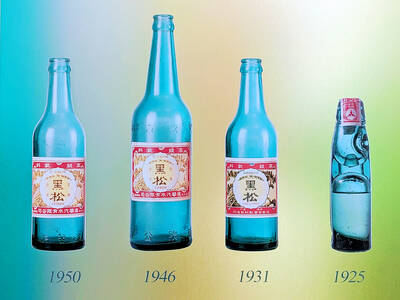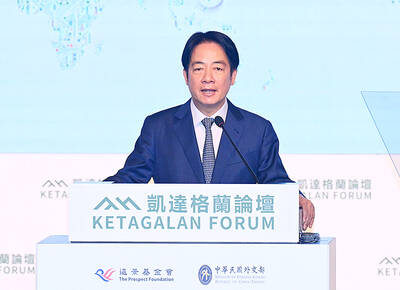Ina laboratory at the Massachusetts Institute of Technology, there’s a suit of clothing that can make anyone feel ready for Social Security.
It’s called the Age Gain Now Empathy System, or AGNES, a navy-blue jumpsuit laced with braces and elastic bands and topped with a white MIT hard hat. Exercise physiologist Rozanne Puleo helped a team of mechanical engineers develop AGNES. The goal: To teach engineers in their 20s and 30s how to design products that are easy for people in their 70s to use.
“There hasn’t been one person who’s put on this suit who hasn’t said, ‘Wow, I didn’t know opening a package could be this difficult,’” Puleo said. “You can be somewhat empathetic, but you really never understand.”
At MIT’s AgeLab, understanding the needs of aging people has been a full-time job for nearly 10 years. Founder Joseph Coughlin created the lab to help businesses tailor products and services to the world’s older folks. “It’s about designing the lifestyle of the future,” said Coughlin, a dapper 47-year-old who picked up a penchant for bow ties in his teens, while working as an aide to the late US senator Daniel Patrick Moynihan.
Coughlin’s vision of the future is nothing like the youth-obsessed fantasies of TV and movies. In reality, tomorrow belongs to the old. The UN reported in 2007 that people above 60 are the fastest-growing age group on earth. There are 700 million of them now, and there will be 2 billion by mid-century. In the US alone, people over 65 made up 12 percent of the population in 2006, but the number will rise to 20 percent by 2030. As a result, Coughlin said, “Our grandparents, and ourselves as we age, are folks who are defining the future of lifestyle.”
Yet making products specifically for old people can be commercial suicide. “If you design for the old,” said Coughlin, “the young won’t use it and the old will run away.” But features that benefit older consumers, like more readable labels or packages that are easier to open, are helpful to younger customers as well. Coughlin foresees a future full of products that quietly incorporate his lab’s research, making them more useful to people of any age.
Coughlin spent more than a decade at consulting firm EG&G, where he specialized in transportation issues and became interested in the needs of aging drivers. Armed with a doctorate in public policy from Boston University, Coughlin joined MIT’s School of Engineering in 1997.
“Public policy is about engineering institutions,” said Coughlin, and he believes our institutions need a major overhaul to cope with an aging population. He launched the AgeLab in late 1999. Since then, a host of businesses — insurance companies, food producers, carmakers — have invested millions in the lab’s research.
The most visible of these investments is a red Volkswagen Beetle that sits in a second-floor laboratory. “Miss Daisy,” as Coughlin calls it, might be the world’s most expensive Beetle, even though it doesn’t have a motor. Instead, the engine compartment, like the rest of the car, is crammed with digital electronics — about US$1 million worth.
A computer generated roadway is projected on a wall in front of Miss Daisy, and aging drivers are recruited for simulated test drives. Electrodes measure their breathing and heart rate; cameras mounted on the dashboard track eye movements. It’s a bid to figure out how old people respond to diverse driving situations, and whether carmakers can help by improving the design of their vehicles. AgeLab research inspired BMW to redesign the controls in some of its high-end sedans.
Down in the parking lot, another AgeLab car is fully functional. A black Volvo SUV lets drivers conduct vision and reaction tests in the real world. They’d better drive carefully; Coughlin said the Volvo, with all its computers, radar sensors, and video cameras, cost US$1.5 million to assemble.
In another corner of the lab is a mockup of a supermarket self-scanning device that attaches to the user’s shopping cart. Supermarkets like Stop & Shop already use such devices, but the AgeLab is working on a version that would read medical data from a “smart card” carried by an elderly shopper. If customers scanned an item that was bad for their health, the scanner would issue a gentle warning and suggest safer alternatives. The scanner would erase the user’s medical data after checkout, to protect privacy.
But some of the AgeLab’s corporate allies aren’t interested in creating new and improved gadgets. “It isn’t the technology, it’s focusing on the business and marketing opportunities to address an aging population,” said Vicki Shepard, senior vice president of Healthways Inc, a Nashville firm that provides telephone and Internet support for people with chronic illnesses.
Armed with survey data from hundreds of elderly volunteers recruited by the AgeLab, Healthways has redesigned its Web site and written materials, to make them more usable by older patients. The company and the lab have also teamed up with pollsters at the Gallup Organization on a 25-year study of the health of seniors. The survey, which began last year, places 1,000 phone calls per day to seniors, then studies the results for clues on how to intervene before small health problems become crises.
AgeLab research is also helping families with funeral arrangements. Everest Funeral Package LLC in Houston, which provides online funeral planning and price negotiation, worked closely with the AgeLab in designing its services. “They helped us shape the model of our business,” said Everest president Mark Duffey.
Instead of focusing on the elderly, the AgeLab’s funeral research led Everest to concentrate on their baby boomer children. AgeLab researchers found that the oldest daughter of the family is most likely in charge of parents’ funeral arrangements. “She wants to be able to make consumer decisions like she makes for everything else,” said Duffey, “and the funeral industry doesn’t let you do that.” That’s because most funeral homes don’t provide an easy way to compare prices and services.
So AgeLab helped Everest create a unique database by telephoning thousands of funeral homes nationwide, and publishing their prices and services on the company’s Web site. “It’s that data that empowers the consumer to be able to make very sound choices,” Duffey said.
Still, AgeLab is mainly focused on the living, particularly the millions of baby boomers who soon won’t need an AGNES suit to feel old. Today, Florida is the oldest US state, with 17 percent of its citizens over 65, but “the US, in 20 years, is going to be a nation of Floridas,” Coughlin said. “It’s a personal issue, with profound public challenges associated with it.”

Aug. 4 to Aug. 10 When Coca-Cola finally pushed its way into Taiwan’s market in 1968, it allegedly vowed to wipe out its major domestic rival Hey Song within five years. But Hey Song, which began as a manual operation in a family cow shed in 1925, had proven its resilience, surviving numerous setbacks — including the loss of autonomy and nearly all its assets due to the Japanese colonial government’s wartime economic policy. By the 1960s, Hey Song had risen to the top of Taiwan’s beverage industry. This success was driven not only by president Chang Wen-chi’s

Last week, on the heels of the recall election that turned out so badly for Taiwan, came the news that US President Donald Trump had blocked the transit of President William Lai (賴清德) through the US on his way to Latin America. A few days later the international media reported that in June a scheduled visit by Minister of National Defense Wellington Koo (顧立雄) for high level meetings was canceled by the US after China’s President Xi Jinping (習近平) asked Trump to curb US engagement with Taiwan during a June phone call. The cancellation of Lai’s transit was a gaudy

From Godzilla’s fiery atomic breath to post-apocalyptic anime and harrowing depictions of radiation sickness, the influence of the nuclear bombings of Hiroshima and Nagasaki runs deep in Japanese popular culture. In the 80 years since the World War II attacks, stories of destruction and mutation have been fused with fears around natural disasters and, more recently, the Fukushima crisis. Classic manga and anime series Astro Boy is called “Mighty Atom” in Japanese, while city-leveling explosions loom large in other titles such as Akira, Neon Genesis Evangelion and Attack on Titan. “Living through tremendous pain” and overcoming trauma is a recurrent theme in Japan’s

As last month dawned, the Democratic Progressive Party (DPP) was in a good position. The recall campaigns had strong momentum, polling showed many Chinese Nationalist Party (KMT) lawmakers at risk of recall and even the KMT was bracing for losing seats while facing a tsunami of voter fraud investigations. Polling pointed to some of the recalls being a lock for victory. Though in most districts the majority was against recalling their lawmaker, among voters “definitely” planning to vote, there were double-digit margins in favor of recall in at least five districts, with three districts near or above 20 percent in